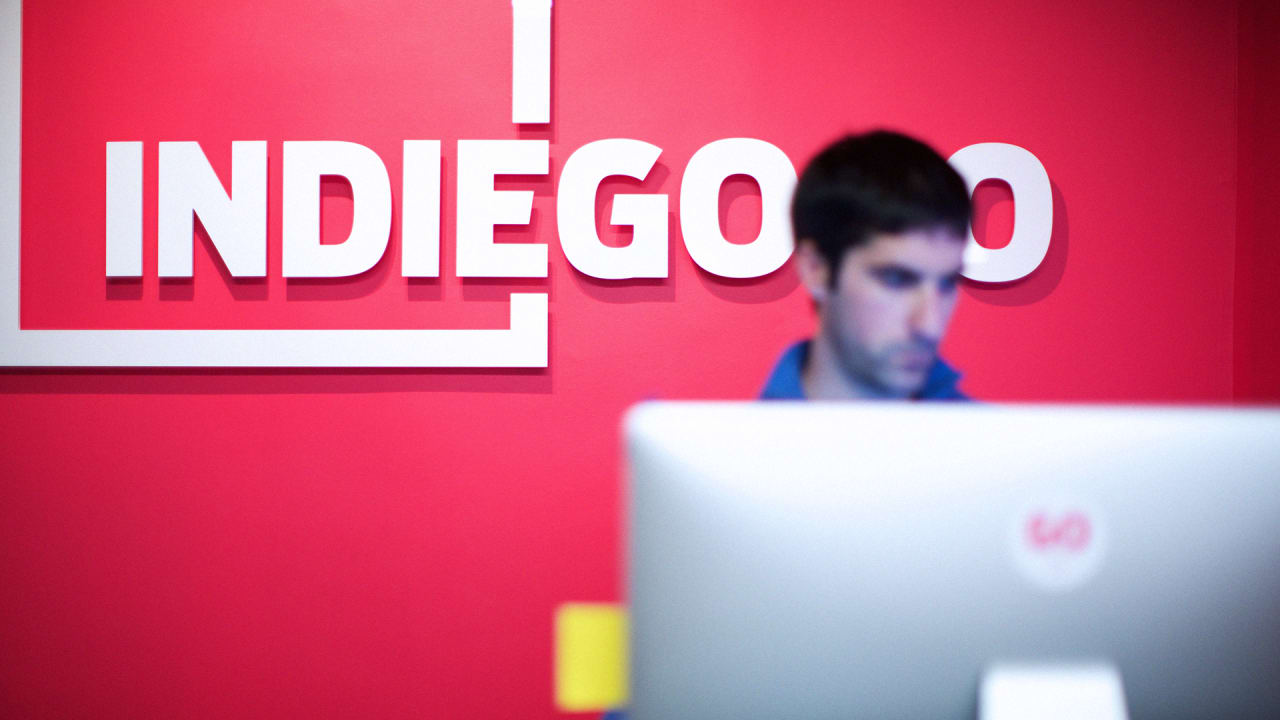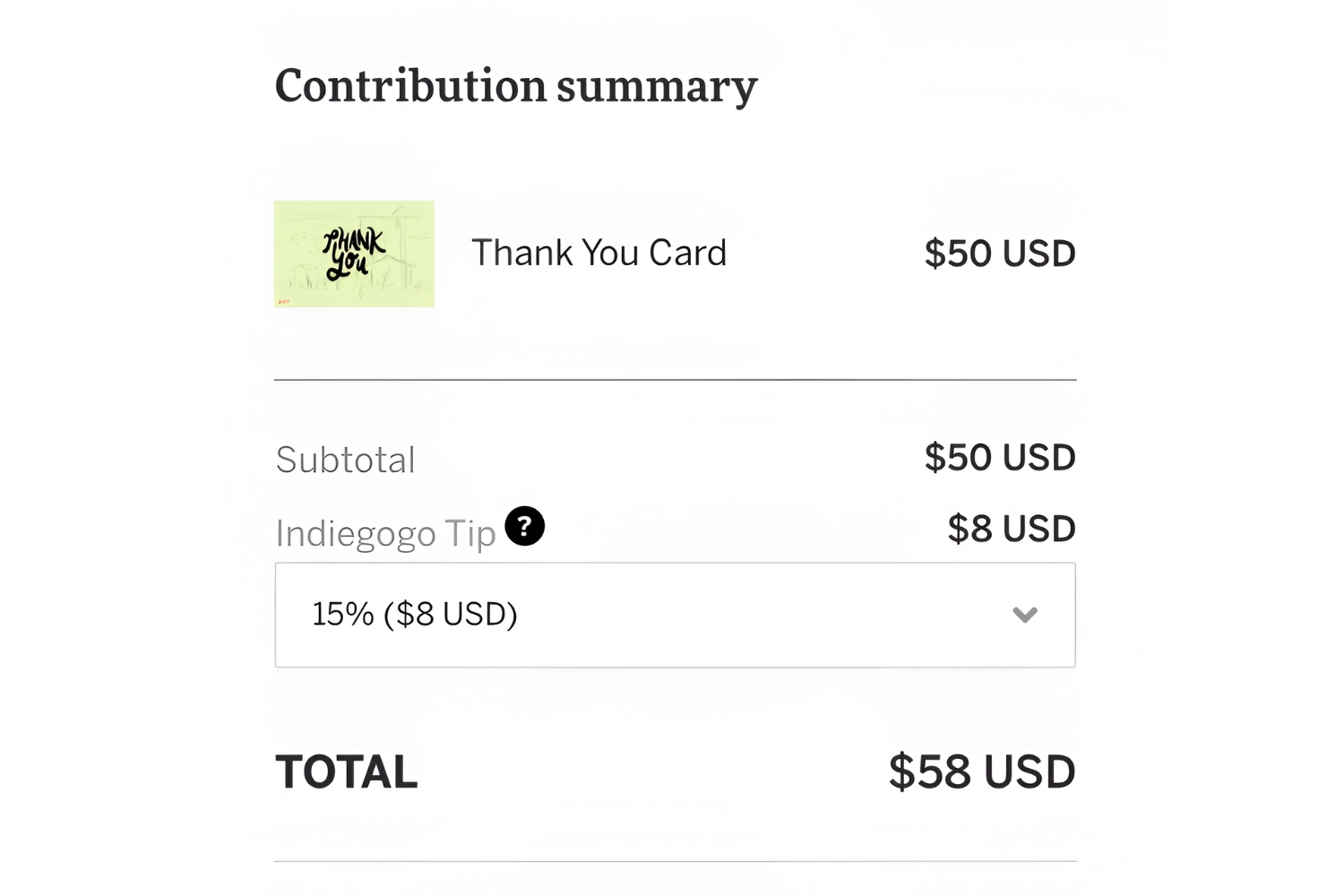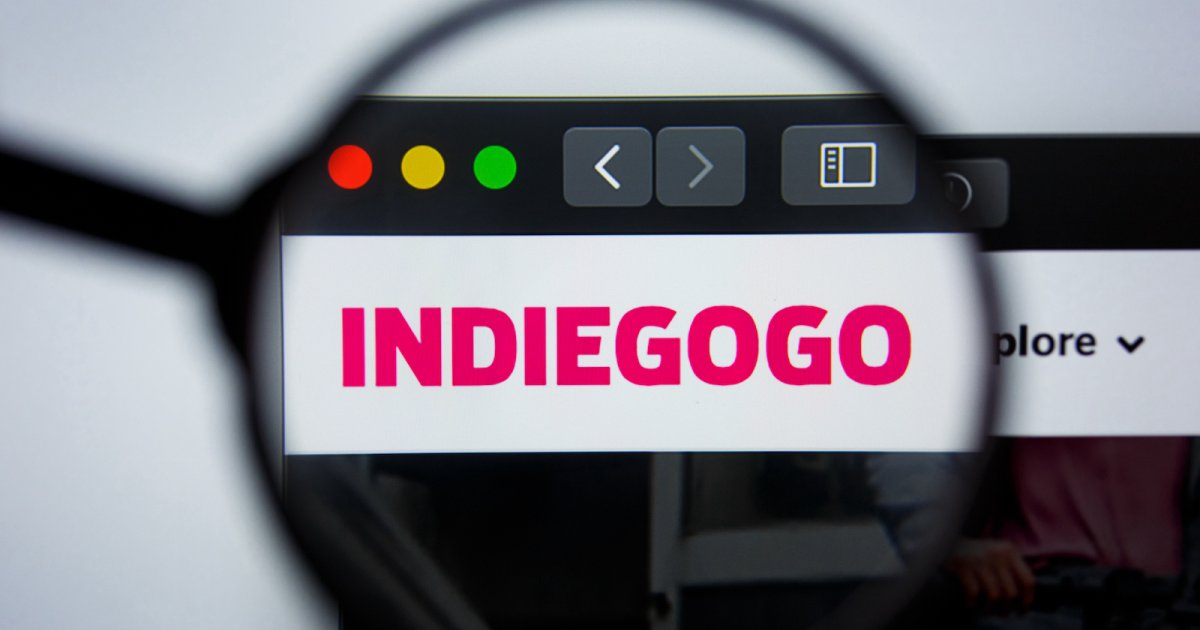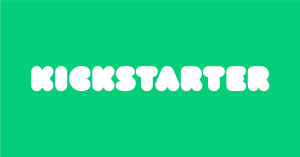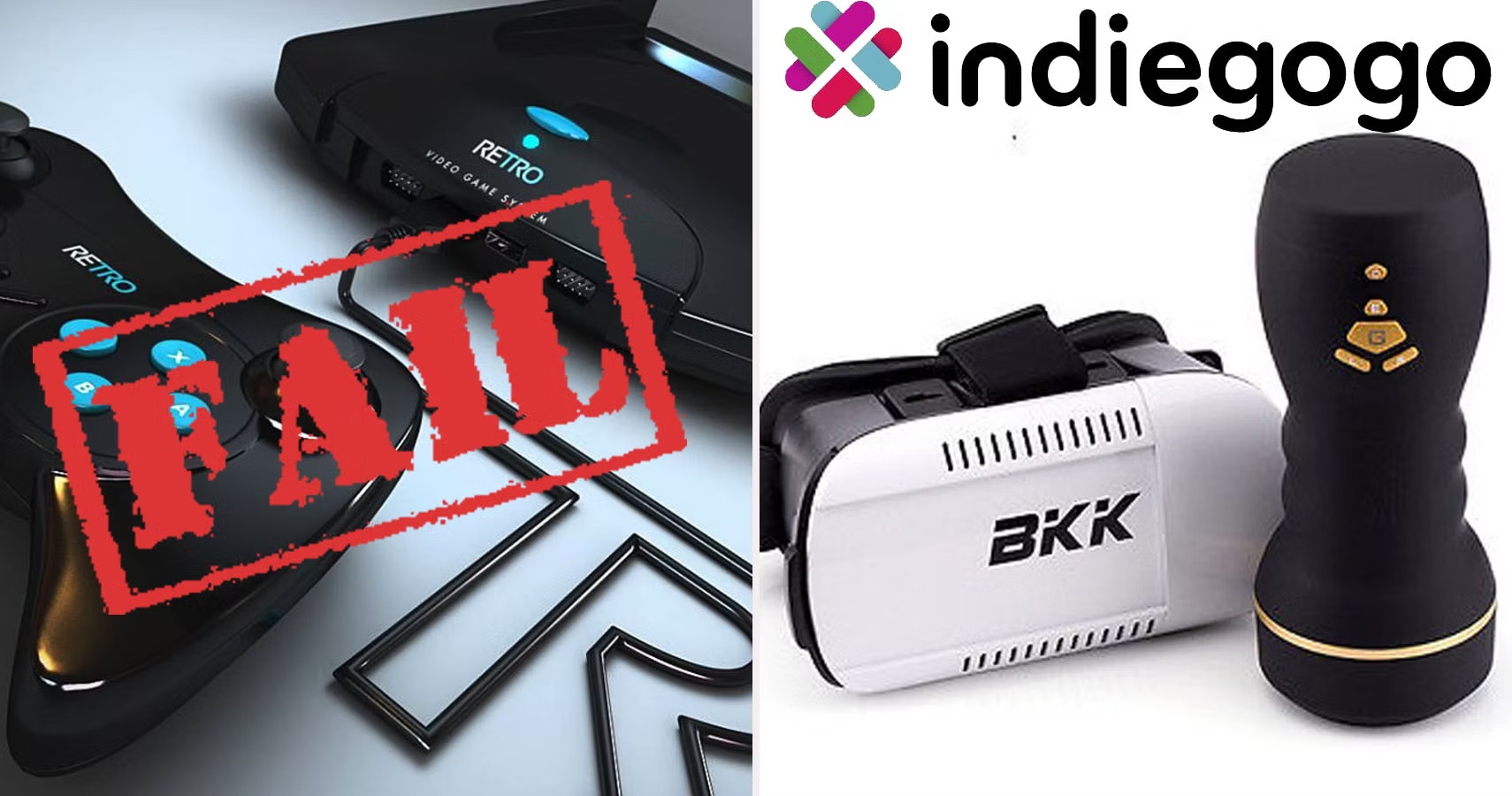Introduction
Crowdfunding has rapidly gained popularity in recent years as a means for entrepreneurs, innovators, and creatives to turn their ideas into reality. Platforms like Indiegogo have enabled individuals and startups to raise funds directly from the public, allowing them to bypass traditional funding channels.
With the promise of bringing innovative products and projects to life, Indiegogo has become a go-to platform for both creators and backers. However, as with any investment, there are risks involved. Not every project on Indiegogo will ultimately deliver on their promises.
While the majority of projects on Indiegogo are successful and fulfill their backers’ expectations, there are cases where projects fail to deliver, leaving backers empty-handed. In this article, we will explore what happens when an Indiegogo project can’t deliver the promised product, the reasons behind these failures, and the steps taken by Indiegogo to address such issues.
Understanding the potential risks associated with crowdfunding projects is crucial for both creators and backers. By having a clear understanding of the process, challenges, and potential pitfalls, backers can make more informed decisions about which projects to support and how to mitigate the risk of a failed delivery.
It is important to note that the intention of this article is not to deter individuals from supporting projects on Indiegogo, but rather to provide insight into the potential challenges and the steps taken by the platform to address failed deliveries. Crowdfunding platforms have become a vital ecosystem for innovation and creativity, and with proper knowledge and precautions, backers can continue to support and be a part of transformative projects.
The Rise of Crowdfunding Platforms
In recent years, crowdfunding platforms have revolutionized the way projects are funded and brought to life. These platforms provide a unique opportunity for creators to showcase their ideas to a global audience and raise money directly from backers.
Prior to the rise of crowdfunding, traditional funding options such as loans from banks or investment from venture capitalists were the primary means for entrepreneurs and innovators to secure financial support for their projects. However, these avenues often came with stringent requirements, limited accessibility, and a higher risk of rejection.
Crowdfunding platforms, like Indiegogo, emerged as a game-changer, democratizing the funding process and empowering creators to connect directly with their potential audience. Through crowdfunding, creators can tap into a global network of backers who are passionate about their projects and willing to provide financial support.
This revolutionary approach to financing projects has led to the rapid growth of crowdfunding platforms. Indiegogo, founded in 2008, quickly became one of the leading platforms in the industry. Its user-friendly interface, flexible funding models, and a wide range of project categories have made it a popular choice for both creators and backers.
With the rise of crowdfunding platforms, individuals and startups no longer need to rely solely on traditional funding channels. They can leverage the power of the crowd to validate their ideas, gather support, and secure the necessary funds to turn their dreams into reality.
Furthermore, crowdfunding has created a symbiotic relationship between creators and backers, providing backers with an opportunity to be part of the journey from conception to completion. Backers not only contribute financially but also become advocates and brand ambassadors for the projects they support.
In addition to funding, crowdfunding platforms have also become invaluable marketing tools for creators. By showcasing their projects on platforms like Indiegogo, creators can generate buzz, build a community around their ideas, and receive valuable feedback from potential backers.
Overall, the rise of crowdfunding platforms has revolutionized the way projects are funded, enabling individuals and startups to bypass traditional funding channels and connect directly with their audience. It has democratized the funding process, empowering creators and backers alike. However, it is important to acknowledge the risks involved and the potential challenges faced by crowdfunding projects, including the possibility of failed deliveries.
Understanding Indiegogo and How It Works
Indiegogo is one of the most well-known crowdfunding platforms, offering individuals and startups a platform to raise funds for their projects. Understanding how Indiegogo works is essential for both creators and backers who want to engage with the platform effectively.
At its core, Indiegogo operates on the concept of “crowdfunding,” wherein a large number of people collectively fund a project. Creators create a campaign page on the platform, providing a detailed description of their project, including its purpose, timeline, and funding goals.
Indiegogo offers two funding models: “Flexible Funding” and “Fixed Funding.” With Flexible Funding, creators can keep the funds raised, even if they do not reach their initial funding goal. This model allows projects to receive funds even if they fall short of the target, offering flexibility and support for projects that may need additional funding. On the other hand, Fixed Funding requires projects to reach their funding goal within a specified timeframe; otherwise, the funds are returned to backers.
Backers are the individuals who contribute financially to a project on Indiegogo. They can browse through the platform and discover various projects in different categories, deciding which ones they want to support. Backers have the option to contribute any amount they desire, with perks often offered to incentivize higher pledges. These perks can range from early access to the product, exclusive updates, or even personalized experiences.
Once a campaign is live, backers have the opportunity to ask questions, provide feedback, and engage with creators directly through the campaign’s comment section. This interactive element fosters a sense of community and transparency, allowing creators to keep their backers informed about the project’s progress.
While the initial crowdfunding phase is crucial for creators to raise the necessary funds, it is important to note that crowdfunding is not a guarantee of success. Even with a successful campaign, there are many challenges that creators face during the manufacturing and delivery process.
Indiegogo provides creators with various tools and resources to navigate the crowdfunding process successfully. From campaign planning and promotion to fulfillment and post-campaign support, Indiegogo offers guidance to help creators navigate each stage of their project.
In the next sections, we will explore the challenges faced by projects on Indiegogo and the steps taken by Indiegogo to address failed deliveries.
The Initial Backing Phase
The initial backing phase of an Indiegogo campaign is a critical period for creators, as it determines whether they will be able to secure the necessary funds to bring their project to life. During this phase, creators rely on the support of backers to help them reach their funding goals.
Backers play a crucial role in the success of an Indiegogo campaign. They are the individuals who believe in the project and are willing to contribute financially to make it a reality. Backers can choose how much they want to pledge towards a campaign and often receive perks or rewards based on their level of contribution.
During the backing phase, creators must actively promote their campaign to attract potential backers. This involves leveraging social media, email marketing, and other promotional channels to spread the word about their project. The success of a campaign often depends on the creator’s ability to effectively communicate the value and impact of their project, compelling backers to invest in their idea.
Creators should provide detailed information about their project, including its purpose, timeline, and any prototypes or mock-ups available. Backers need to have a clear understanding of what they are supporting and the potential rewards or benefits they will receive if the project reaches its funding goal.
Communication is key during the backing phase. Creators should regularly update their campaign page with progress reports, answering questions from potential backers, and addressing any concerns or feedback. This fosters trust and transparency, helping to build a strong community around the project.
It is important for backers to carefully evaluate the viability of a campaign before pledging their support. This includes assessing the credibility of the creator, conducting research on their past projects (if any), and evaluating the feasibility of the project based on the available information. Backers should also consider the risks involved, such as potential delays or the possibility that the project may not be delivered as promised.
During the backing phase, backers should also familiarize themselves with Indiegogo’s terms and conditions, refund policies, and the specific funding model chosen by the creator (Flexible Funding or Fixed Funding). This ensures that they are aware of their rights and options in case the project does not meet its obligations.
The backing phase of an Indiegogo campaign is an exciting time for both creators and backers. It is the phase where the collective support of backers can transform an idea into a tangible reality. However, it is essential for creators and backers to understand the challenges that can arise during the manufacturing and delivery process, as well as the measures taken by Indiegogo to address potential issues.
The Manufacturing Process
Once an Indiegogo campaign successfully reaches its funding goal, the next crucial phase is the manufacturing process. This stage involves turning the creative concept into a tangible product that can be delivered to backers.
The manufacturing process is often a complex and challenging stage for creators. It involves various steps, including sourcing materials, creating prototypes, testing and iterating designs, and eventually mass-producing the product.
Creators need to carefully select manufacturing partners or suppliers who can meet their quality standards and production requirements. This involves conducting thorough research, vetting potential partners, and negotiating contracts to ensure a smooth manufacturing process.
During this stage, setbacks and delays can occur. Factors such as supply chain disruptions, production errors, or unforeseen challenges can arise, leading to delays in delivering the product to backers. Creators must effectively communicate and manage these challenges, keeping backers informed about any changes or updates that may impact the delivery timeline.
Iterating and refining the product design is also a crucial aspect of the manufacturing process. Creators may need to make modifications based on feedback or testing results to ensure the final product meets or exceeds the expectations of backers.
Quality control is paramount during the manufacturing process to ensure that each product meets the required standards. Creators must implement rigorous quality checks at various stages of production to identify and rectify any issues before the products are shipped to backers.
Logistics and fulfillment are integral parts of the manufacturing process. Creators need to plan and organize the shipment and delivery of the products to backers in a timely and efficient manner. This includes coordinating with shipping carriers, addressing customs and import regulations, and providing accurate tracking information to backers.
However, despite careful planning and meticulous execution, challenges can arise during the manufacturing process that may impact the delivery timeline. Unforeseen circumstances, such as changes in the global market, natural disasters, or production issues, can cause delays or even result in the cancellation of the project.
Indiegogo acknowledges these challenges and the potential for failed deliveries. The platform encourages creators to be transparent about the risks associated with their projects and to provide regular updates to backers regarding any manufacturing or delivery challenges they encounter.
In the event that a project is unable to deliver the promised product, Indiegogo takes steps to mitigate the impact on backers and address the situation appropriately. We will delve into these steps in detail in the next section.
Common Challenges Faced by Indiegogo Projects
While crowdfunding campaigns on Indiegogo can be successful and deliver on their promises, there are common challenges that creators face during the process. It’s important for both creators and backers to be aware of these challenges to better understand the risks involved in supporting Indiegogo projects.
One of the most significant challenges for creators is the manufacturing and production process. This includes sourcing materials, finding reliable manufacturing partners, and ensuring that the final product meets quality standards. Delays and setbacks in manufacturing can occur due to supply chain issues, production errors, or changes in design requirements.
Financial challenges can also arise for creators. Even if a campaign successfully reaches its funding goal, unforeseen costs may arise during the manufacturing and delivery phase. This includes unexpected expenses related to shipping, customs, or resolving issues that emerge during production. Creators must carefully manage their finances to ensure they have the necessary resources to fulfill their obligations.
Communication is key. Some creators struggle with effectively communicating with their backers throughout the entire process. Lack of transparency, infrequent updates, or insufficient information about project progress can lead to frustration and mistrust among backers. Maintaining open and honest communication is crucial for building a strong relationship with backers and addressing any concerns they may have.
Unforeseen obstacles and external factors can disrupt the delivery timeline. Creators may face challenges such as changes in regulations, natural disasters, or unexpected demand for the product. These circumstances may require adjustments to the timeline, resulting in delays in delivering the product to backers.
Another related challenge is managing customer expectations. It can be challenging for creators to meet the varied expectations of backers, who may have different interpretations of product specifications, features, or delivery timelines. Clear communication and managing expectations upfront can help minimize misunderstandings and dissatisfaction among backers.
Furthermore, some projects may encounter technical or design complications that require additional time and resources to resolve. These obstacles may lead to delays in product development or require modifications to the original design, impacting the scheduled delivery timeline.
It is important for creators and backers to understand that not all challenges can be anticipated or avoided. Despite the best planning and execution, unforeseen circumstances can arise. However, Indiegogo has recognized these common challenges and has implemented measures to address them, providing options and support for both creators and backers when projects face difficulties.
Failed Delivery: Reasons and Consequences
While the majority of projects on Indiegogo successfully deliver the promised products to their backers, there are cases where projects fail to do so. Understanding the reasons behind failed delivery and the consequences for both creators and backers is essential in navigating the risks associated with supporting Indiegogo projects.
There can be various reasons for failed delivery. One common factor is the complexity of manufacturing and production. Projects that involve intricate designs, advanced technology, or unique production processes may face unexpected challenges, leading to delays or even the inability to deliver the product as originally planned.
Financial difficulties can also contribute to failed delivery. Even if a project successfully raises funds on Indiegogo, unexpected costs or mismanagement of funds can leave creators unable to fulfill their commitments. Insufficient funds can result in delayed production, quality compromises, or even project cancellation.
Issues with manufacturing partners or suppliers can also contribute to failed delivery. Unreliable or inexperienced partners may encounter difficulties in meeting production requirements, resulting in delays or subpar product quality. Choosing the right manufacturing partners is crucial for ensuring a successful production process.
External factors can also play a significant role in failed delivery. Global events, such as changes in regulations, natural disasters, or unforeseen disruptions, can severely impact the production timeline or even make it impossible to deliver the product to backers. These circumstances are often beyond the control of both creators and Indiegogo.
Consequences of failed delivery can be significant for both creators and backers. For creators, failed delivery can damage their reputation, credibility, and the trust of their supporters. It can also result in potential legal action or financial liabilities if creators are unable to fulfill their commitments to backers.
Backers who do not receive the promised product may feel disappointed, frustrated, and even betrayed. In some cases, they may seek refunds, compensation, or decide to take legal action against the creator or Indiegogo. Failed delivery can impact the overall reputation of Indiegogo as a crowdfunding platform and erode the confidence of other potential backers in supporting future projects.
Indiegogo recognizes the seriousness of failed delivery and the consequences it can have for creators and backers. The platform has taken steps to address these issues, implementing measures to encourage transparency, provide support to creators facing challenges, and offer options for backers to seek refunds or compensation when projects fail to deliver as promised.
In the following sections, we will explore the steps taken by Indiegogo to address failed deliveries and the options available to both creators and backers in such situations.
Steps Taken by Indiegogo to Address Failed Deliveries
Indiegogo acknowledges the risks and challenges associated with crowdfunding projects, including the potential for failed deliveries. To mitigate the impact on backers and creators, the platform has implemented several measures to address and resolve these situations.
Transparency is a key aspect of Indiegogo’s approach to addressing failed deliveries. The platform encourages creators to be transparent about the risks involved with their projects and to provide regular updates to backers. This allows backers to stay informed about the progress and any challenges that may arise during the manufacturing and delivery process.
If a project on Indiegogo fails to deliver, the platform offers options for backers to seek resolution. Backers can initiate a refund request through the Indiegogo support system. This process allows backers to request a refund directly from the creator. If the creator agrees to the refund, Indiegogo works with the creator to process the refund transaction.
In some cases, creators may face financial difficulties that prevent them from fulfilling their obligations. In such situations, Indiegogo may step in to assist with the refund process. Indiegogo’s dedicated support team works with both creators and backers to facilitate communication and resolution.
Indiegogo also encourages creators to provide alternative options or compensation to backers when they are unable to deliver the original promised product. This could include offering backers a different product or a similar product from a different brand. Providing an alternative solution allows creators to fulfill their commitments to backers, even if the original project cannot be delivered as intended.
Creators who repeatedly fail to deliver on their commitments may face consequences on Indiegogo. The platform has a set of guidelines and policies in place to ensure that creators are held accountable for their actions. This includes the potential removal of the creator’s account from the platform, limiting their ability to create future campaigns.
Indiegogo continuously strives to improve its platform and address the challenges faced by creators and backers. The platform actively encourages feedback from both parties to gain insights into their experiences and to make necessary improvements in its policies and procedures.
While Indiegogo takes steps to address failed deliveries, it is crucial for backers to thoroughly review and understand a project before pledging their support. Conducting due diligence on the creator, assessing their credibility and previous track record, and carefully reviewing project updates and communication from the creator can help backers make informed decisions and minimize the risk of encountering failed deliveries.
In the next section, we will explore the options available to both creators and backers in the event of failed delivery on Indiegogo.
What Happens If an Indiegogo Project Can’t Deliver the Product?
When an Indiegogo project is unable to deliver the promised product, it can cause disappointment and frustration for backers who have invested their money and trust in the project. Understanding the options and steps taken by Indiegogo in such situations can provide clarity and guidance for both creators and backers.
If an Indiegogo project cannot deliver the product as promised, creators are encouraged to communicate with their backers and provide regular updates regarding the challenges they are facing. Open and honest communication is essential for maintaining trust and transparency.
Backers have the option to seek resolution through Indiegogo’s support system. They can initiate a refund request, requesting a refund directly from the creator. If the creator agrees to the refund, Indiegogo supports the process by facilitating the transaction.
If a creator is unable to fulfill refund requests on their own due to financial difficulties, Indiegogo may step in to assist with the refund process. Indiegogo’s support team works with both creators and backers to facilitate communication and resolution.
In some cases, creators may offer alternative options or compensation to backers if they cannot deliver the original promised product. This could include offering backers a different product or a similar product from a different brand. Providing an alternative solution allows creators to fulfill their commitments to backers, even if the original project cannot be delivered as intended.
It’s important to note that Indiegogo’s role is to facilitate communication and provide support, but the ultimate resolution lies between the creator and the backers. Indiegogo acts as a mediator to help find a fair and reasonable resolution for all parties involved.
Creators who repeatedly fail to deliver on their commitments may face consequences on the Indiegogo platform. This can include the potential removal of their account and limitations on their ability to create future campaigns. Indiegogo has guidelines and policies in place to ensure that creators are held accountable for their actions.
While Indiegogo strives to address failed deliveries and provide resolution options, it’s crucial for backers to conduct due diligence before pledging their support. Researching the creator’s credibility, reviewing project updates and communication, and carefully assessing the feasibility of the project can help backers make informed decisions and minimize the risk of encountering failed deliveries.
Indiegogo acknowledges the challenges and risks associated with crowdfunding projects and continuously works to improve its platform and policies. Through transparent communication, support, and resolution options, Indiegogo aims to provide a fair and positive crowdfunding experience for both creators and backers.
Refund and Compensation Options for Backers
When an Indiegogo project is unable to deliver the promised product, backers may be eligible for refunds or alternative compensation options. Indiegogo provides a framework to facilitate resolution between creators and backers in such situations.
Backers have the option to seek a refund through Indiegogo’s support system. They can initiate a refund request, expressing their desire to receive a refund from the creator. If the creator agrees to the refund, Indiegogo supports the process by facilitating the refund transaction.
If the creator is unable to fulfill refund requests independently, Indiegogo may step in to assist with the refund process. Indiegogo’s support team works with both creators and backers to facilitate communication and resolution, ensuring that refunds are processed appropriately.
In some cases, creators may offer alternative options or compensation to backers. This could include providing a similar product from a different brand or offering additional perks or benefits to compensate for the failed delivery. The aim is to find a mutually agreeable solution that satisfies both parties.
However, it’s essential to note that the resolution ultimately depends on the creator and backer reaching an agreement. Indiegogo acts as a mediator and facilitator in the resolution process, providing support and guidance to help find a fair and reasonable solution.
When seeking refunds or alternative compensation, backers should be aware of the terms and conditions specified by the creator. Some campaigns may have specific refund policies or compensation options outlined in their project descriptions. It’s important to carefully review this information before making a contribution.
Backers should also consider the funding model chosen by the creator. In the case of Flexible Funding, where creators keep the funds raised regardless of whether they reach their funding goal, the likelihood of receiving a refund may be lower. However, increasing transparency and communication between creators and backers can help minimize dissatisfaction and manage expectations in such situations.
Indiegogo encourages creators to be transparent about the challenges they face and to communicate openly with their backers throughout the process. Backers, in turn, should actively engage with creators, ask questions, and provide feedback, ensuring that there is clear communication and understanding between all parties involved.
In the unfortunate event that a resolution cannot be reached, backers may consider seeking legal recourse. However, it’s important to note that Indiegogo’s terms of use outline a legal agreement between users and the platform, and each user is responsible for resolving disputes independently.
Ultimately, Indiegogo aims to provide a fair and positive crowdfunding experience. By offering refund and compensation options, and facilitating communication and support, Indiegogo strives to ensure that backers are protected and that creators are held accountable for delivering on their commitments.
Legal Action and Escalation Process
In situations where a resolution cannot be reached between the creator and backers, legal action may be considered as a last resort. However, it’s important to note that Indiegogo’s terms of use establish a legal agreement between users and the platform, and each user is responsible for resolving disputes independently.
If backers believe that they have a legitimate legal claim against a creator who failed to deliver the promised product, they should consult with a qualified legal professional for guidance. The specific legal recourse available will depend on the jurisdiction and the nature of the claim.
Before pursuing legal action, it may be helpful for backers to gather evidence. This includes keeping records of communication with the creator, documenting any delays or discrepancies in the project, and preserving any evidence that supports their claim.
It’s recommended to engage in dispute resolution processes, such as mediation or negotiation, before resorting to legal action. These processes offer a way to address the issue outside of the courtroom and potentially reach a mutually agreeable resolution.
Legal action can be a costly and time-consuming process. Backers should carefully consider the potential benefits, risks, and associated costs before pursuing this route. Consulting with legal professionals who specialize in crowdfunding and contract law can provide valuable insights and guidance.
Indiegogo acts as a facilitator and platform for crowdfunding campaigns, but it does not provide legal advice or intervene in legal disputes between creators and backers. Each user is responsible for their actions and resolving disputes independently.
Indiegogo has established community guidelines and policies to ensure a fair and positive crowdfunding experience for all participants. However, in cases where a project fails to deliver, backers should primarily rely on the legal frameworks and systems available in their jurisdiction to seek appropriate recourse.
It’s important for creators and backers to be aware of the potential legal implications and risks involved when participating in crowdfunding campaigns. Transparency, clear communication, and managing expectations can help mitigate the likelihood of resorting to legal action.
While legal action may be a necessary step for some backers, it’s essential to recognize that it can be a complex and uncertain process. Exploring alternative dispute resolution methods and seeking legal advice are crucial steps to consider before initiating legal proceedings.
Indiegogo encourages users to familiarize themselves with the platform’s terms of use and community guidelines, as well as to seek legal advice from qualified professionals when necessary. By doing so, backers can better understand their rights and options in the event of failed deliveries or unresolved disputes.
Tips for Backers to Minimize the Risk of Failed Deliveries
Supporting crowdfunding projects on platforms like Indiegogo involves an element of risk, as not all projects may deliver as promised. While Indiegogo takes measures to address failed deliveries, backers can also take certain steps to minimize their risk and make informed decisions when supporting projects. Here are some tips to consider:
- Conduct thorough research: Before backing a project, thoroughly research the creator and their past projects (if any). Assess their credibility, experience, and track record to help gauge their ability to deliver on their commitments.
- Read project updates and communication: Carefully review the project updates, comments section, and any communication from the creator. Pay attention to how transparent and responsive they are, as this can indicate their level of commitment and professionalism.
- Assess the feasibility and timeline: Evaluate the project’s feasibility and whether the proposed timeline seems realistic. Consider factors such as the complexity of the product, manufacturing challenges, and any potential obstacles that may affect the delivery timeline.
- Evaluate funding goals and financial plans: Scrutinize the funding goals set by the creator and assess whether they align with the scope of the project. Understand how the funds will be used and whether the creator has a plan for managing the finances throughout the process.
- Engage with the creator: Interact with the creator by asking questions and participating in discussions. This can give you a better understanding of the project and the creator’s responsiveness, communication style, and commitment to their backers.
- Assess risks and manage expectations: Acknowledge that there are inherent risks in supporting crowdfunding projects. Evaluate the potential risks involved, such as manufacturing challenges, delays, or the possibility of the project not meeting expectations. Manage your expectations accordingly to avoid potential disappointments.
- Consider product prototypes and design progress: If available, review the creator’s product prototypes and design progress. This can provide insight into the project’s development stage and help determine the level of completeness and viability.
- Review backer feedback and comments: Take the time to read through the comments and feedback from other backers. This can provide you with different perspectives and experiences that may influence your decision to back the project.
- Consider reputable projects and creators: Give preference to projects and creators with a proven track record or those who have successfully delivered on past campaigns. Established creators often have the experience and knowledge to navigate the challenges of fulfilling crowdfunding campaigns.
- Assess shipping and fulfillment plans: Understand the creator’s shipping and fulfillment plans. Check if they have a clear plan in place, including coordination with shipping carriers and adherence to customs and import regulations.
While these tips can help minimize the risk of supporting projects that may fail to deliver, it’s important to remember that there is still some level of uncertainty involved in crowdfunding. Investing in projects inherently carries a degree of risk, and backers should carefully consider these factors before making a decision to support a project on Indiegogo or any other crowdfunding platform.
Conclusion
Crowdfunding platforms like Indiegogo have revolutionized the way entrepreneurs, innovators, and creatives bring their ideas to life. They offer a unique opportunity for creators to showcase their projects to a global audience and raise the necessary funds to turn their visions into reality.
While crowdfunding has opened up new avenues for funding and innovation, it is crucial to understand the risks involved, particularly the potential for failed deliveries. Not every project on Indiegogo will ultimately deliver the promised product, and both creators and backers need to be aware of the challenges and uncertainties they may encounter along the way.
Indiegogo, as a leading crowdfunding platform, has implemented measures to address failed deliveries and provide resolution options for both creators and backers. Transparency, open communication, refund processes, and alternative compensation options are in place to help mitigate the impact of project failures and protect the interests of backers.
For backers, it is important to navigate the crowdfunding landscape wisely. Thorough research, evaluation of project feasibility, and engagement with creators are key steps in minimizing the risk of supporting projects that may not deliver as promised.
While Indiegogo takes measures to facilitate resolution between creators and backers, it is important to note that legal action may be necessary in certain cases. Backers should consider seeking legal advice from qualified professionals if they believe they have legitimate claims against creators who fail to deliver.
The crowdfunding experience is a collaborative effort between creators and backers. Clear communication, managing expectations, and mutual respect are crucial for a positive and successful crowdfunding journey.
Crowdfunding platforms continue to evolve and improve to enhance the overall experience for both creators and backers. With proper knowledge, communication, and diligence, crowdfunding can remain a powerful and transformative tool, connecting creators with their supporters and turning innovative ideas into reality.









